Decorating Ideas for Rooms With Knotty Pine Paneling Hunker
Epic: 2,000+ words exploring this piney puzzle
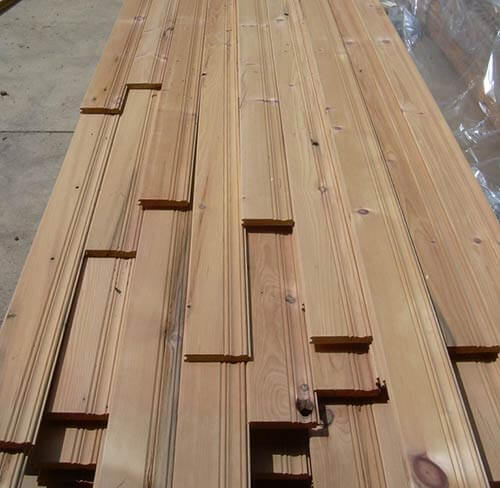
Pickwick Pine! We recently learned that this is the name for the what we believe was the most common profile of knotty pine paneling in the 1940s and 1950s — and possibly, for many decades prior. Since we love to chronicle the almost-forgotten terms for the beloved decor within mid-century modern and modest houses, we dove into this subject and today, explore the origins of and more information about pickwick pine paneling. Oh and yes: We identify some sources where you can still buy pickwick pine paneling today.
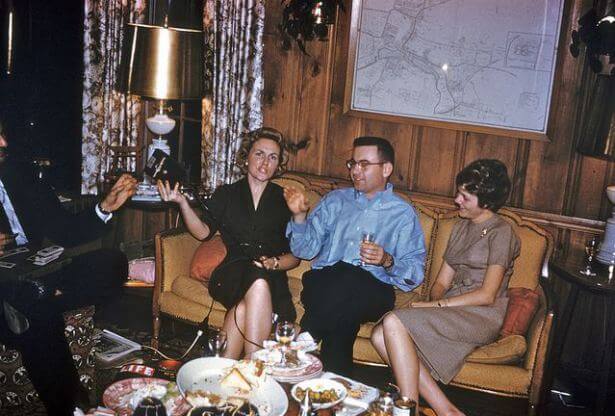
What is Pickwick Pine paneling?
"Pickwick" refers to the unique edge profile of each piece of this tongue-in-groove pine paneling. Stare at the profile edge from the side and you can see: Pickwick consists of two beads with a hollow in between on one side of each board… this pickwick side also includes the tongue… and on the other side of the board, there is a groove.

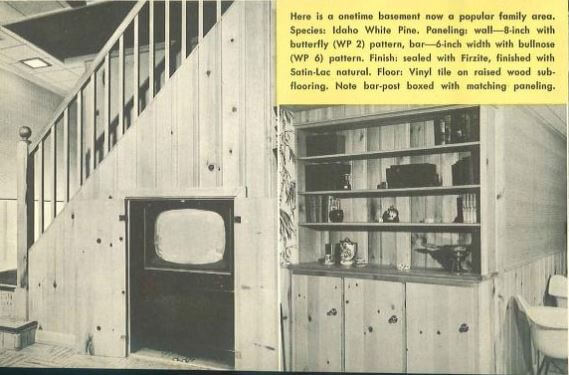
Thecatalog we found from 1960 also called WP-2 "butterfly pattern" (this terminology spotted in the yellow area of text in the image above).
So now we have three different terms to identify this paneling profile: Pickwick… WP-2… or butterfly. But, we'll call it Pickwick, for sure. Buy your boards, let them rest in the house for a few days to adjust to the humidity, start piecing the boards together, coat them in wood conditioner and then lay on the liquid bug poop — aka Amber Shellac, and voila, you got yer room full o' knotty pine — just like at Grandma and Grandpa's house. And likely, their grandma and grandpa's, too — we have some reason this profile goes back to the early 20th century — maybe even earlier.
Today, it seems that you can get Pickwick panels that are 4″, 6″, 8″ or 10″ wide. Looking at the photo from Mod Betty above, I think that back in the day, panels might even have been wider — 12″? What do you think? Note, The "face width" — the part showing — of any size panel will be less than its nominal width (the size of the board before it is assembled), because tongues get nested into grooves, making the "face width" less wide.
Personally, I think I like the wider boards. If you use boards that are too narrow — like the 4″ — and it starts to look like bead board.
Also, I like the idea of using randow widths and piecing them together. That said, I do not know if folks would have done this in the wayback time machine days.
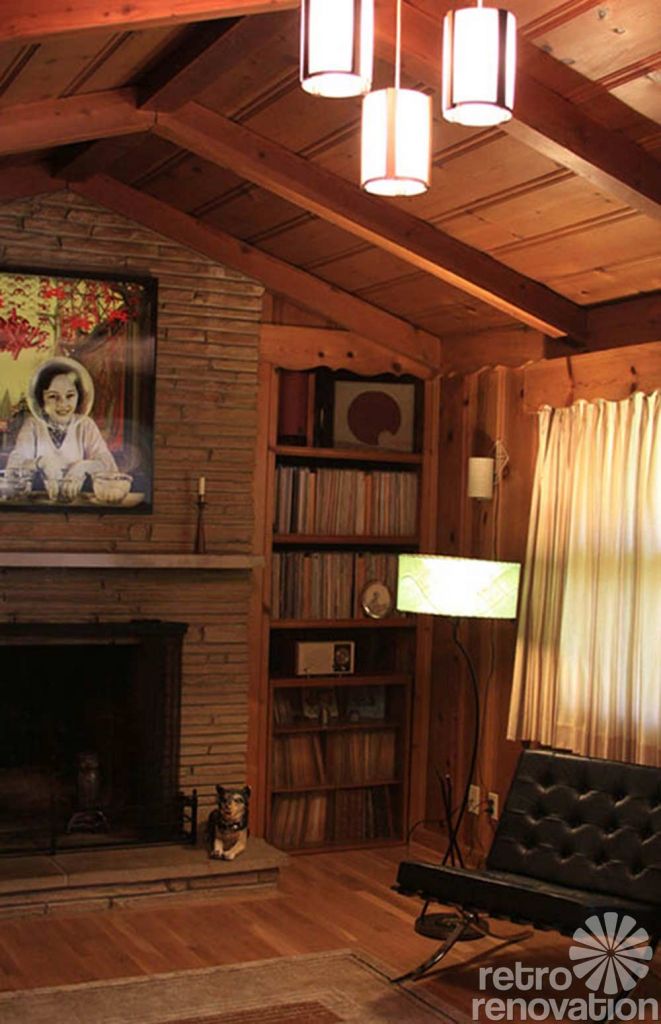
Why is it called "pickwick" pine paneling? We need help!
But.. whence the name "Pickwick"? We do not know. However, we have some hints at a start:
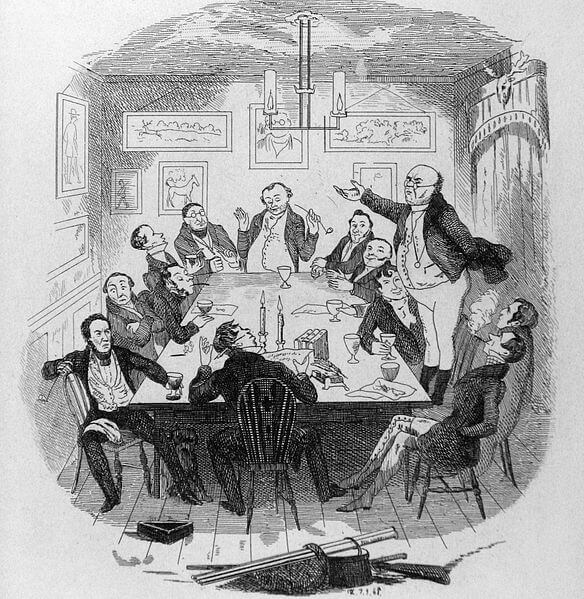
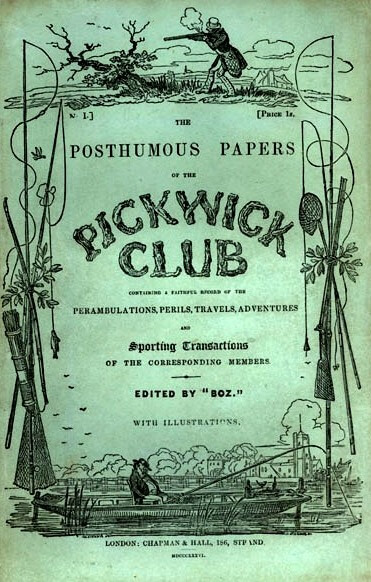
- In 1837, Charles Dickens published his first comic novel, The Posthumous Papers of the Pickwick Club— also known as The Pickwick Papers . The name of the protagonist was Samuel Pickwick, and his club consisted of fellow Pickwickians — they got into a lot of adventures that went… awry. The 1891 book History of Pickwick says (page 12-13) that Dickens took the "unusual and quaint" name Pickwick from the family that ran the coaches between Bath and London. Moses Pickwick was the coach proprietor's name,this 1917 thesis says, pointing out that Dickens liked whimsical names for his characters. Following on the success of the book, the word "Pickwickian" took on a meaning of its own.Merriam-Webster defines Pickwickian "marked by simplicity and generosity." There's also a connotation of pleasant plumpness. AND, see the original cover illustration — the title "Pickwick Club" seems to drawn out in characters that look like pieces of wood! Based on all this, I will guess: Whoever named the profile for this knotty pine superstar pattern chose the name after The Pickwick Papers to underscore the simple every-person beauty of this pine paneling and its decorative profile. Or, maybe they just liked the whimsical word and its allusion to historical England.
- Interestingly, the word 'wick' is Old English for house or village and morphed into the Greek oikos, which morped into the word ecology and economy. Could it be that Moses Pickwick was from a village called Pick?
We welcome any reader sleuthing on this question — this pickwick pine puzzle will now perturb Pam until an answer is apprehended. So now — just like we wrestled the etymology of the term "hudee" ring to the ground — we're on a pursuit to answer the question:
"Why — absolutely positively with primary proof — is it called pickwick pine paneling"? Help!
Update We have an answer for why this was called "Pickwick":
Steven Jarvis, author of the forthcoming novel, Death and Mr. Pickwick, has what appears to be a pretty darn good answer to our question in this comment posted to the blog overnight Jan. 14, 2015:
Hi everyone,
I have done a great deal of research on The Pickwick Papers, and although I do not know the specific reason for the naming of "Pickwick pine panelling", what I can say is that the name "Pickwick" was for almost a century the most powerful advertising tool in the world, and all kinds of products and businesses were called "Pickwick". Most commonly, it was applied to food and drink, because there is so much eating and drinking in Dickens's Pickwick Papers, but many other uses were found for the name. The point is that Dickens's novel was SO popular, that it acted as a kind of "permanent advertisement", and any business calling itself "Pickwick" would automatically give itself pleasant associations. The great era of Pickwick-naming came to an end in about 1930, but even today there are businesses that call themselves "Pickwick", and it is not always obvious why. For those who are interested, my research led to my writing a novel, which will be out later this year, about the whole Pickwick phenomenon, It's called "Death and Mr Pickwick". Further information is on the website http://www.deathandmrpickwick.com
Well, howdy do, mystery solved. Thank you, Steven, we will feature your book when it comes out — and I for one plan to read it. Hey, I'm also going to my library today to get a copy of The Pickwick Papers to read. I feel so smart and literary.
Pickwick pine paneling was massively popular in midcentury America
There is no doubt in our mind that pickwick pine paneling was massively popular in American homes after World War II — we will venture to guess it was the #1 most popular pine paneling pattern. Some googling found this reference to pickwick pine — a1956 ad in the Nashua, New Hampshire Telegraph. It encouraged homeowners to use the paneling in their den, playroom, living room or kitchen. In nearly seven years of blogging, we also have seen it used in basements, attics, porches — even bathrooms and ceilings — see our 2012 uploader of readers' interiors full o' the knotty.
Why the popularity of the decorative pickwick pine pattern in midcentury America?
I will attribute it to longtime, continued interest in Early American interior decoration. Building homes, early Americans would have used the materials at hand — and in the early colonies, that would have meant a lot of pine. A LOT OF PINE. These trees blanketed Northeast America (more on this subject further down).The Wikipedia page on pinus strobus also says:
Old growth pine in the Americas, of various Pinus species, was a highly desired wood since huge, knot-free boards were the rule rather than the exception. Pine was common and easy to cut, thus many colonial homes used pine for paneling, floors and furniture. Pine was also a favorite tree of loggers since pine logs can still be processed in a lumber mill a year or more after being cut down. In contrast, most hardwood trees such as cherry, maple, oak, and ash must be cut into 1" thick boards immediately after felling or large cracks will develop in the trunk which can render the wood worthless. — Sourced toLing, H. 2003. The Eastern White Pine. Native Plant Society of NJ Newsletter Winter 2003 pp 2–3.
Fast forward to the middle of the 20th century, fast-growing pine remained an easy wood to obtain. It's a relatively soft wood — so it's easy for lumber mills, pattern makers and installers to work with. During the postwar housing boom, the pine industry promoted its use with lots of advertising. It was very accessible for handy, thrifty do-it-yourselfers.
Pine — including knotty pine — is a classic, vernacular material that was critically important, it seems, to many generations of American homes for many generations.
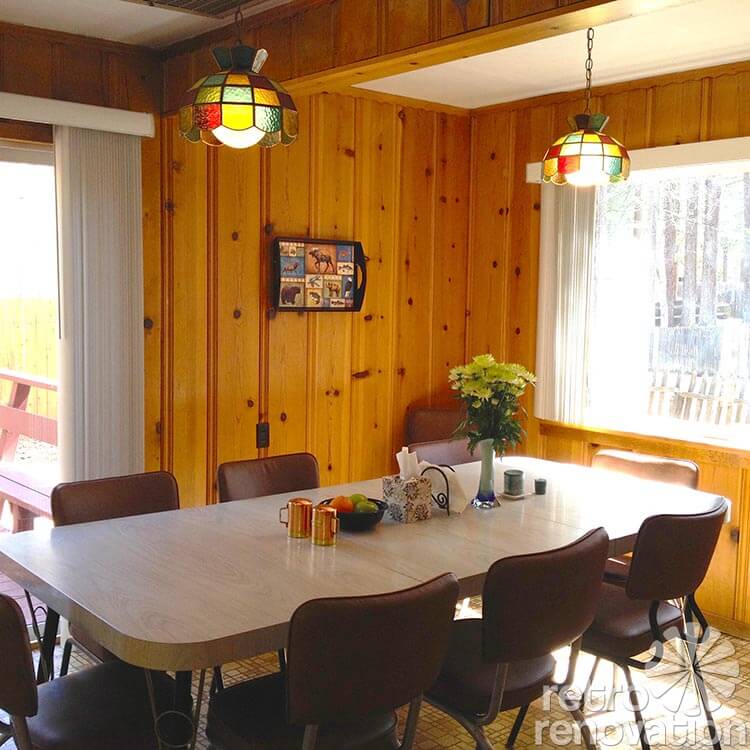
Moreover, in midcentury America, knotty pine was not only considered practical — it was downright fashionable, said to to Ed Vorhees, who has owned Tidewater Lumber in Greer, S.C. since 1960. Vorhees knows this material well — and his companystill mills and sells pickwick pine paneling. I asked Vorhees if he knew where the name Pickwick Pine came from, but he did not know. I also asked him if he knew how long the pattern had been available America, and while he did not know, he thought it had been available for quite a long time — since the early 20th century, at minimum.
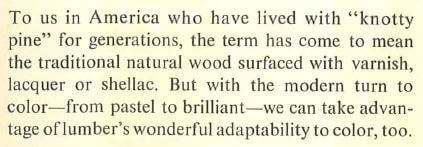
Above: Yes, the 1960 catalog that we found says Americans have lived with knotty pine for generations….
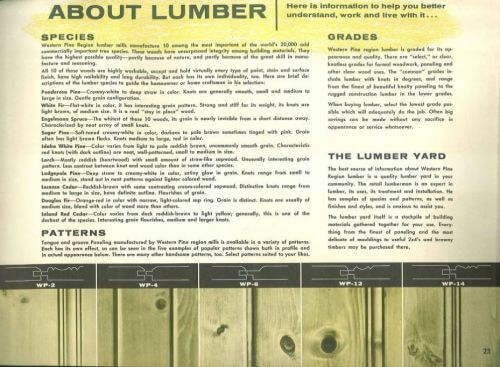
Classic knotty pine comes from pinus strobus — mountain white pine
Vorhees told me that classic knotty pine paneling was and still is made from pinus strobus — a soft white pine that once blanketed Eastern North American and which today continues to be grown all along the Appalachian Trail. (Wiki also says these trees are the tallest in North America. Don't I know it: I think I have two or three ginormous, 60-year-old pinus strobus outside my house, poised to fall on the roof when the next big wind blows. Ugh.)
I think I am understanding — from these various sources — that old growth pinus strobus was much more clear — free of knots — than new growth pinus strobus today. That's because old growth trees got so big. Newer growth trees today, when cut, display many more of the knots — which are a result of the many branches that grow on a pinus strobus. As the old growth forests were exhausted (only 1% of old growth remains today, the wiki says,) the fast growth new growth continued to be used. But, the knots made it more useful for surface decorative treatment — like paneling — as opposed to other applications requiring clear knot-free lumber.
Other genuses of pine — most notably those from the West Coast — do not have as many knots, Vorhees said (I think; my notes are bad on this detail, sorry.) This made them better for features like doors and windows. Vorhees says that America was flooded with West Coast pine doors and windows "for years and years."
That said,the catalog we have for 1960 pine paneling — published by the Western Pine Region Mills — shows the pickwick pattern profile in use — and applicable to 10 different species of woods from Western forests. So pine paneling — including knotty pine panelling and including pickwick pine pattern panelling — was not exclusively made from pinus strobus. There were a variety of species, and we can surmise from this marketing material that lumber mills could use any species to mill any pattern, depending on the market.
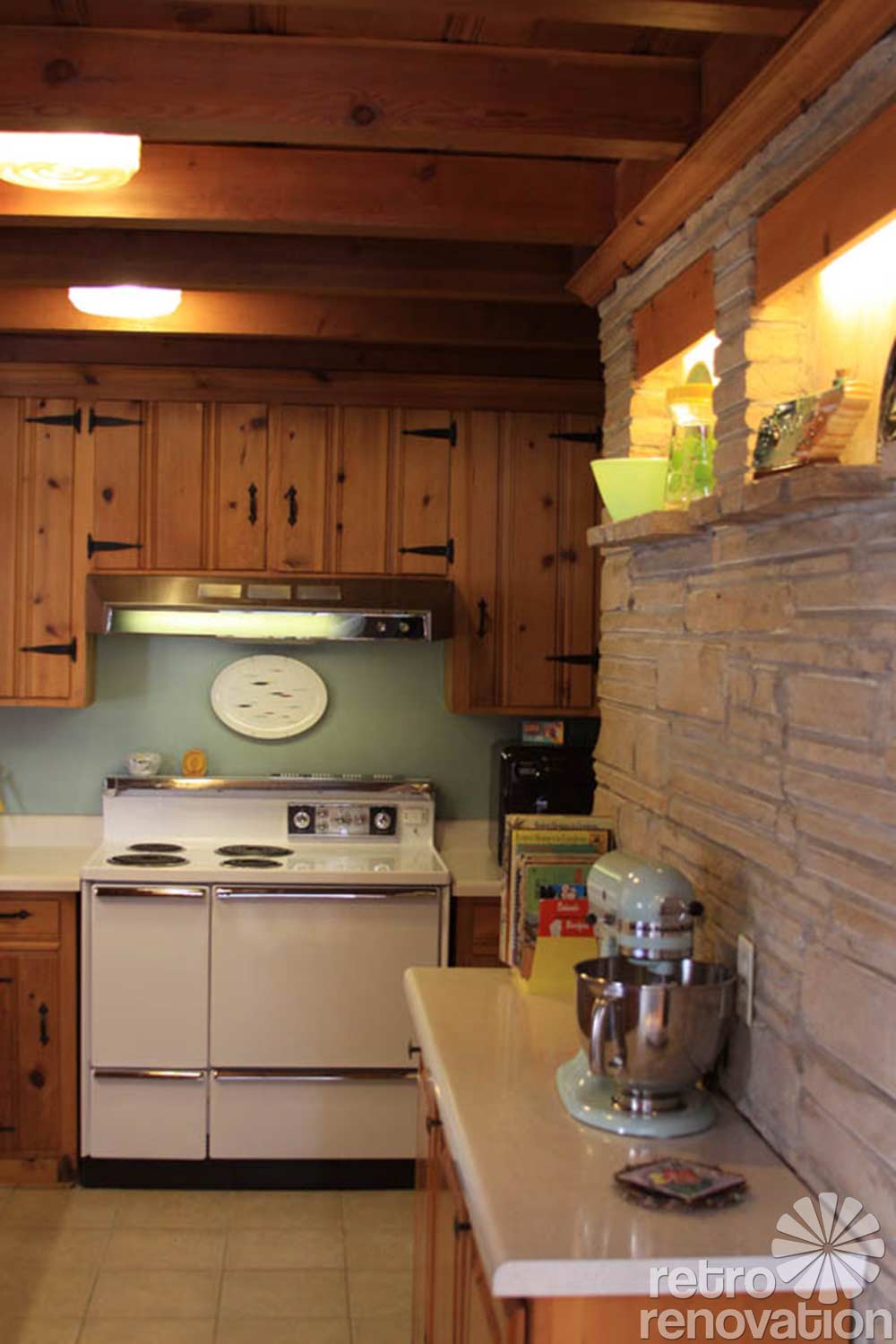
Where to buy pickwick pine paneling today
I didn't research this specifically, but I tend to believe that new growth white pine boards are still quite abundant in America. Perhaps you can find a local woodworking or milling company to get their hands on some and mill you some pickwick pine paneling? Or, we found some companies online that actually had "pickwick pine" somewhere in their text so that it would come up in search:
- Ed Voorhee's companyTidewater Lumber and Moulding, Inc. in Greenville, S.C. offers pickwick paneling. The company buys their own pine… dries it… then mills it. They deliver using their own trucks within 150 miles and will also ship. The company has been in business since 1960.
- We also found Middleton Lumber, located in Middleton, Pennsylvania, which offers pickwickin a variety of widths.
- And, we even found it available on Amazon —Pickwick pine paneling from Capitol City Lumber(* affiliate link)
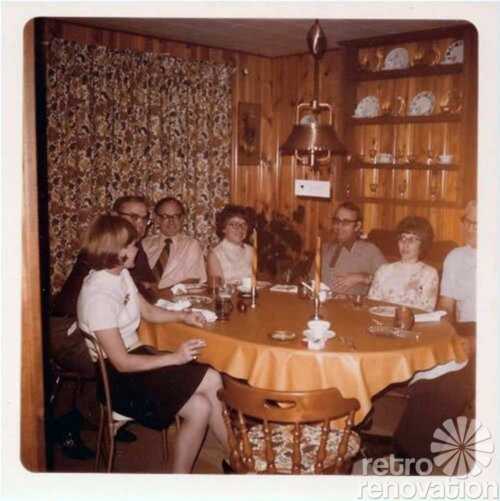
Buy vintage panels — or vintage pine milled into pickwick
- Is the pine from yee olden days better than the pine made today? One expert we talked to — Craig Carver, owner of Fine Reclamation Works — said "yes". In our lead photo for this story, we featured Pickwick Pine panels milled byFine Reclamation Works using vintage knotty pine salvaged from beams in an old New York mill. Carver told us that me had thought the beams were heart pine. Heart pine is harder than white pine and makes wonderful flooring — it's very desirable among homeowners today — and the older the better. Alas, he said, the beams were the more prosaic white pine, so instead of milling them into flooring, he milled them into old timey Pickwick. "Old white pine is better than new white pine," he told us. "It has more character."
- If you're lucky, you might also find Pickwick pine paneling at your local Habitat for Humanity ReStore, salvage yard or even on Craigslist. Since salvaged board has been previously installed and removed — sometimes more carefully than others — there will be nail holes and possible chipping to deal with. Sometimes that finish can be beat to heck, too…. Even so, using salvaged Pickwick could yield an authentic look for less. Here's some Pickwick pine for sale in Dallas, for example.
So there you go, dear readers: Pickwick Pine.
Did you enjoy today's class?
Special thanks to Kate for lots of the research that also went into this article.
Decorating Ideas for Rooms With Knotty Pine Paneling Hunker
Source: https://retrorenovation.com/2014/05/19/pickwick-pine-paneling-3/